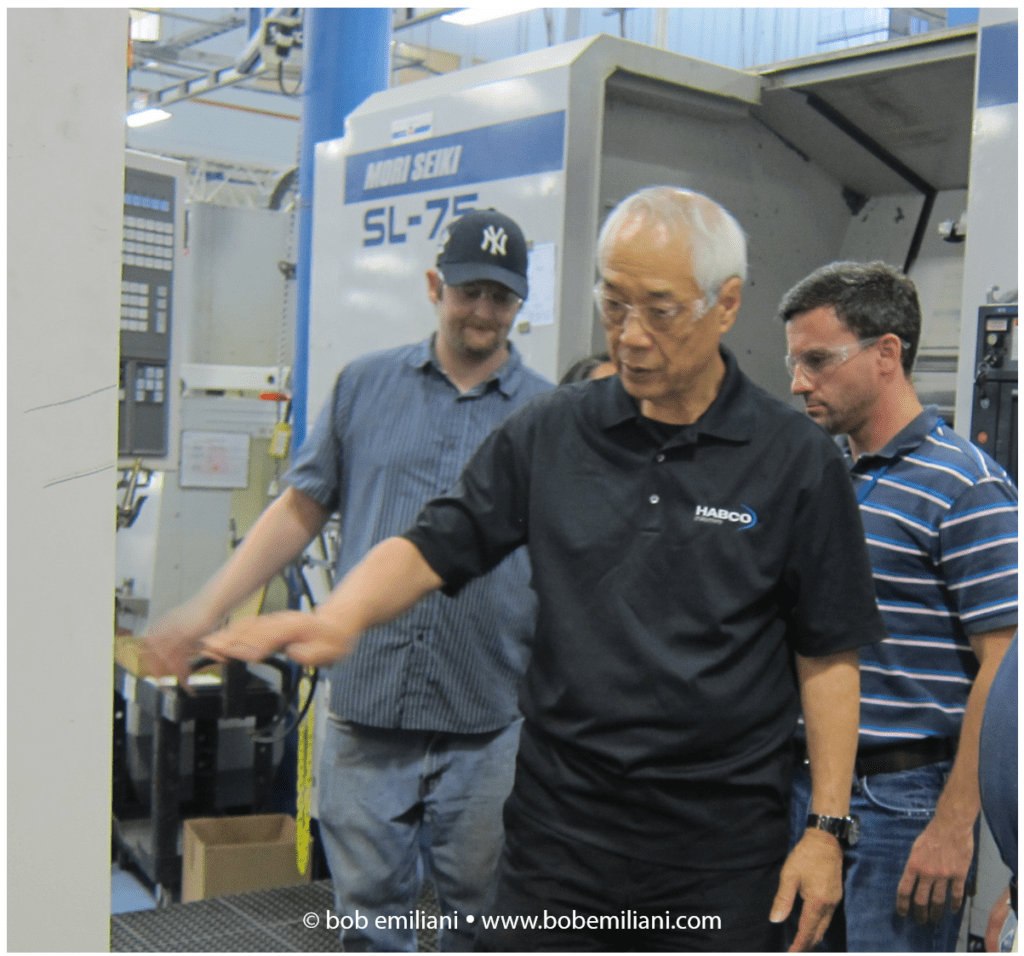I was recently going through my Shingijutsu files and came across this interesting slide.

What is the meaning of these words according to Shingijutsu?
- Kaizen — Change for the Better
- Kairyo — To Change Things
- Kaikaku — Radical Change
- Kakumei — Revolutionary Change
- Lean (Lost in Translation) — Misunderstanding of Kaizen
Kaizen encompasses defining a “normal condition” (e.g., flow, no struggle, etc.), the creative elimination of abnormalities, self-development, and evolution. This requires changes to several preconceptions in each of the following categories: economic, social, political, historical, philosophical, spiritual, aesthetic, and technological. The way you change your preconceptions is by practicing kaizen. Specifically, Toyota kaizen methods or Shingijutsu’s kaizen methods (the latter being based on the former, but with greater emphasis on human creativity; e.g. “Moonshine“).
Kairyo can also mean “continuous improvement,” but in context it means changing things in ways that are not necessarily for the better. Think of it as continuous change for the sake of change, but which occasionally produces a bona fide improvement that in turn gives the appearance of continuous improvement. Most Lean efforts — the “Fake Lean” efforts — fall under this definition. Here, there is essentially no change in preconceptions. The old way of thinking remains in place.
Kaikaku is radical change, such as going from traditional batch-and-queue material and information processing to a flow system that dramatically increases inventory turns and brings Just-in-Time into existence. This too requires changes to several preconceptions in each of the following categories: economic, social, political, historical, philosophical, spiritual, aesthetic, and technological.
Kakumei would encompass a revolutionary, long-term change in the overall environment such as transitioning from financial capitalism (financialization) to stakeholder (human) capitalism or capitalism based on human and environmental stewardship. Such a revolutionary change would require changes to large numbers of preconceptions in each of the following categories: economic, social, political, historical, philosophical, spiritual, aesthetic, technological, and legal.
Lean (Lost in Translation) First, Lean is conceptually very narrow compared to kaizen, kairyo, kaikaku, and kakumei which are all part of TPS/TW thinking. Second, “Lean (Lost in Translation)” is more than just a misunderstanding of kaizen, the method that created the Toyota Production System (TPS) and The Toyota Way (TW). Lean is something entirely different; a separate knowledge and practice area, one that is often confused with TPS, owing to the initial presentation back in 1988 of Lean (then undefined) as the generic term for TPS. The confusion has remained with us ever since.
But not everyone is confused.

Nearly 10 years ago, knowing that Chihiro Nakao is no fan of Lean management, I ventured to ask him a question about Lean. He quickly cut me off and said: “I don’t know what that is.” To him, TPS and The Toyota Way, which he spent a lifetime practicing and learning, and Lean management are not the same. They are two distinct areas of knowledge and practice, and Nakao-san only knows about TPS and The Toyota Way. He does not view Lean as something that helps a company survive and it does not develop people. Consequently, he has no interest in it whatsoever.
Related to that, I recall Mr. Nakao saying to me, “I taught [James] Womack kaizen. He called it Lean.” He also speaks dismissively of the “MIT people.” He is referring to James Womack, Daniel Jones, and the entire 1980s academic research team that studied TPS. I believe he views that research as having missed critically important elements of TPS and The Toyota Way, both then and subsequently (including, to this day). A few years of gemba walks is incomparable to 50-plus years of genba wisdom.
People often talk negatively about kaizen. To my recollection, this began about 20 years ago when the influential team of James Womack and Daniel Jones began to criticize the consultant-facilitated approach to the five-day kaizen, which in their view produced either unsustainable results or so-called “point kaizen” that failed to connect processes in a value stream. Their persistent criticism of kaizen, absent formal causal analysis, and thus misattributing causality (now shown to be the continued domination of classical management), proved to be beneficial in terms of redirecting legions of Lean professionals to various Lean tools resulting in global entrenchment of kairyo.
The previous three paragraphs may lead you to think that Nakao-san’s disdain for Womack and Jones’ work is mere resentment or rivalry. That is lazy thinking. Instead, what I think is that Nakao-san and his colleagues have a general dislike of academics and a specific, strong dislike for their understanding and characterization of TPS and The Toyota Way. And because Womack and Jones became very influential, their inaccurate renderings of TPS and The Toyota Way sent people far off in wrong directions that wasted vast amounts of time, money, human energy, and goodwill. What I see is profound disappointment — profound disrespect — for the revolutionary teachings of Taiichi Ohno (whom Nakao-san et al revere, calling him “master,” as in one who has great skill, a role model, and still mourn his passing), which got incredibly muddled and transformed into something that it is not — yet for decades Lean, seen as co-opting Ohno-san’s legacy, has been wrongly sold as being representative of TPS and The Toyota Way.
Nakao-san does not have a problem with Womack and Jones as much as he has a problem with what Womack and Jones did to Taiichi Ohno’s life’s work, his wisdom, and his legacy. Shingijutsu’s faithful mission, made at the behest of Taiichi Ohno, has been to teach others what Ohno-san taught them, with high fidelity to Ohno-san’s way of thinking, his wisdom, his goals, and his no-nonsense methods to help companies survive out of respect for employees, suppliers, customers, investors, communities, and the planet. Whatever Womack and Jones’s legacy is, it is not that.
